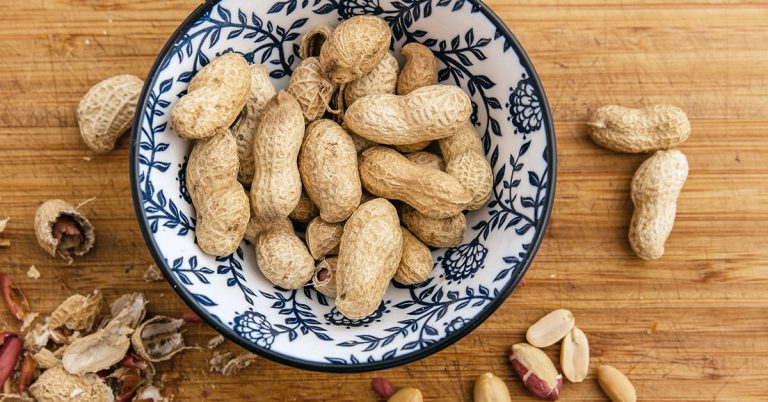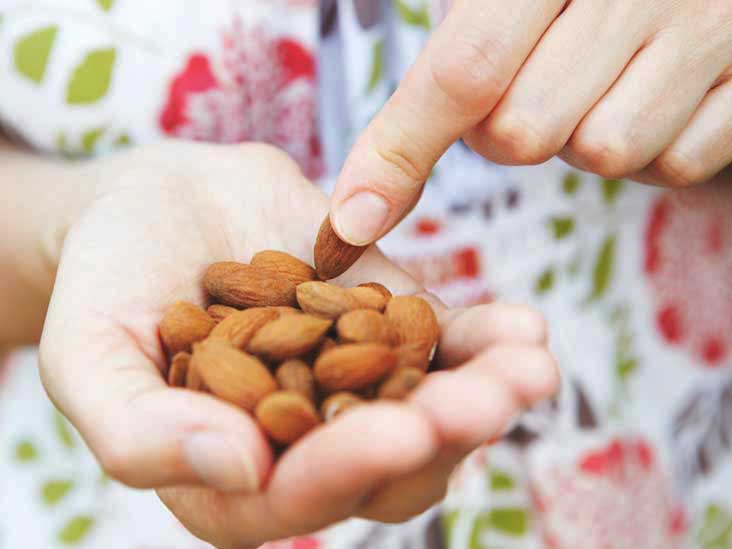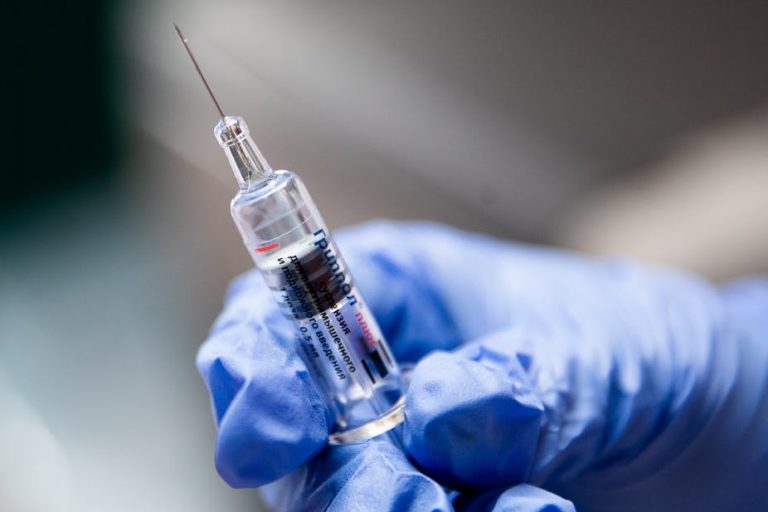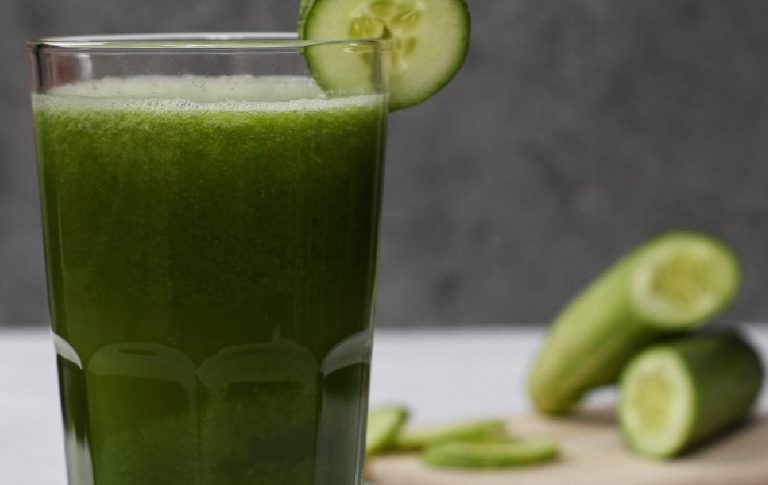Getting good sleep is incredibly important for your overall health.
It may reduce your risk of developing certain chronic illnesses, keep your brain healthy, and boost your immune system (1, 2, 3).
It’s generally recommended that you get between 7 and 9 hours of uninterrupted sleep each night, though many people struggle to get enough (4, 5).
There are many strategies you can use to promote good sleep, including making changes to your diet, as some foods and drinks have sleep-promoting properties (6).
Here are the 9 best foods and drinks you can have before bed to enhance your quality of sleep.
Almonds are a type of tree nut with many health benefits.
They’re an excellent source of many nutrients, as 1 ounce (28 grams) of the dry roasted nuts contains 18% of an adult’s daily needs for phosphorus and 23% for riboflavin (7, 8, 9).
An ounce also provides 25% of the daily manganese needs for men and 31% of the daily manganese needs for women (10).
Eating almonds regularly has been associated with lower risks of a few chronic diseases, such as type 2 diabetes and heart disease. This is attributed to their healthy monounsaturated fats, fiber, and antioxidants.
Antioxidants may protect your cells from harmful inflammation that can lead to these chronic diseases (11, 12).
It’s been claimed that almonds may help boost sleep quality as well. This is because almonds, along with several other types of nuts, are a source of the hormone melatonin. Melatonin regulates your internal clock and signals your body to prepare for sleep (13).
Almonds are also an excellent source of magnesium, providing 19% of your daily needs in only 1 ounce. Consuming adequate amounts of magnesium may help improve sleep quality, especially for those who have insomnia (6, 14, 15).
Magnesium’s role in promoting sleep is thought to be related to its ability to reduce inflammation. Additionally, it may help reduce levels of the stress hormone cortisol, which is known to interrupt sleep (6, 15).
Yet, despite this, research on almonds and sleep is sparse.
One study examined the effects of feeding rats 400 milligrams (mg) of almond extract. It found that the rats slept longer and more deeply than they did without consuming almond extract (16).
The potential sleep-related effects of almonds are promising, but more extensive human studies are needed.
If you want to eat almonds before bed to determine if they affect your sleep quality, a 1-ounce (28-gram) serving, or about a handful, should be adequate.
Summary
Almonds are a source of melatonin and the sleep-enhancing mineral magnesium, two properties that may make them a great food to eat before bed.
Turkey is delicious and nutritious.
It’s high in protein, with roasted turkey providing almost 8 grams of protein per ounce (28 grams). Protein is important for keeping your muscles strong and regulating your appetite (17, 18).
Additionally, turkey is a modest source of a few vitamins and minerals, such as riboflavin and phosphorus. It’s an excellent source of selenium, with a 3-ounce serving providing 56% of the Daily Value (DV) (19).
Turkey has a few properties that explain why some people become tired after eating it or think it encourages sleepiness. Most notably, it contains the amino acid tryptophan, which increases the production of melatonin (20, 21).
The protein in turkey may also contribute to its ability to promote tiredness. There’s evidence that consuming moderate amounts of protein before bed is associated with better sleep quality, including less waking up throughout the night (22).
More research is necessary to confirm turkey’s potential role in improving sleep.
Summary
Turkey may be a great food to eat before bed due to its high amounts of protein and tryptophan, both of which may induce tiredness.
Chamomile tea is a popular herbal tea that may offer a variety of health benefits.
It’s well known for its flavones. Flavones are a class of antioxidants that reduce the inflammation that often leads to chronic diseases, such as cancer and heart disease (23).
There’s also some evidence that drinking chamomile tea may boost your immune system, reduce anxiety and depression, and improve skin health. In addition, chamomile tea has some unique properties that may improve sleep quality (23, 24, 25).
Specifically, chamomile tea contains apigenin. This antioxidant binds to certain receptors in your brain that may promote sleepiness and reduce insomnia (23, 26).
One 2011 study in 34 adults found those who consumed 270 mg of chamomile extract twice daily for 28 days fell asleep 15 minutes faster and experienced less nighttime wakening compared to those who didn’t consume the extract (27).
Another study found that women who drank chamomile tea for 2 weeks reported improved sleep quality compared to non-tea drinkers.
Those who drank chamomile tea also had fewer symptoms of depression, which is commonly associated with sleep problems (28).
Drinking chamomile tea before going to bed is certainly worth trying if you want to improve the quality of your sleep.
Summary
Chamomile tea contains antioxidants that may promote sleepiness, and drinking it has been shown to improve overall sleep quality.
Kiwis are a low-calorie and very nutritious fruit.
One fruit contains only 42 calories and a significant amount of nutrients, including 71% of the DV for vitamin C. It provides men and women with 23% and 31%, respectively, of the vitamin K they need each day.
It contains a decent amount of folate and potassium as well as several trace minerals too (29, 30, 31).
Furthermore, eating kiwis may benefit your digestive health, reduce inflammation, and lower your cholesterol. These effects are due to the high amounts of fiber and carotenoid antioxidants that they provide (32, 33).
According to studies on their potential to improve sleep quality, kiwis may also be one of the best foods to eat before bed.
In a 4-week study, 24 adults consumed two kiwifruits one hour before going to bed each night. At the end of the study, participants fell asleep 42% more quickly than when they didn’t eat anything before bedtime.
Additionally, their ability to sleep through the night without waking improved by 5%, while their total sleep time increased by 13% (34).
The sleep-promoting effects of kiwis are sometimes attributed to serotonin. Serotonin is a brain chemical that helps regulate your sleep cycle (22, 34, 35).
It’s also been suggested that the anti-inflammatory antioxidants in kiwis, such as vitamin C and carotenoids, may be partly responsible for their sleep-promoting effects (34, 36).
More scientific evidence is needed to determine the effects that kiwis may have in improving sleep. Nevertheless, eating 1–2 medium kiwis before bed may help you fall asleep faster and stay asleep longer.
Summary
Kiwis are rich in serotonin and antioxidants, both of which may improve sleep quality when eaten before bed.
Tart cherry juice has some impressive health benefits.
First, it provides modest amounts of a few important nutrients, such as magnesium and phosphorus. It’s a good source of potassium too.
An 8-ounce (240-milliliter) serving contains 17% of the potassium a woman needs each day and 13% of the potassium that a man needs each day (37, 38).
Additionally, it’s a rich source of antioxidants, including anthocyanins and flavonols (39, 40, 41).
Tart cherry juice is also known to promote sleepiness, and it’s even been studied for its role in relieving insomnia. For these reasons, drinking tart cherry juice before bed may improve your sleep quality (6, 20).
The sleep-promoting effects of tart cherry juice are due to its high amounts of melatonin (6, 20, 42).
In a small study, adults with insomnia drank 8 ounces (240 ml) of tart cherry juice twice a day for 2 weeks. They slept 84 minutes longer and reported better sleep quality compared to when they didn’t drink the juice (43).
Although these results are promising, more extensive research is necessary to confirm the role of tart cherry juice in improving sleep and preventing insomnia.
Nevertheless, drinking some tart cherry juice before bed is worth a try if you struggle with falling or staying asleep at night.
Summary
Tart cherry juice contains the sleep-promoting hormone melatonin and may help induce a good night’s sleep.
Fatty fish, such as salmon, tuna, trout, and mackerel, are incredibly healthy. What makes them unique is their exceptional amounts of vitamin D.
For example, a 3-ounce (85-gram) serving of sockeye salmon contains 570 international units (IU) of vitamin D. That’s 71% of your DV. A similar serving of farmed rainbow trout contains 81% of your DV (44).
Additionally, fatty fish are high in healthy omega-3 fatty acids, specifically eicosapentaenoic acid (EPA) and docosahexaenoic acid (DHA).
EPA and DPA are known for reducing inflammation. In addition, omega-3 fatty acids may protect against heart disease and boost brain health (45, 46).
The combination of omega-3 fatty acids and vitamin D in fatty fish has the potential to enhance sleep quality, as both have been shown to increase the production of serotonin (22, 47, 48).
In one study, men who ate 10.5 ounces (300 grams) of Atlantic salmon three times a week for 6 months fell asleep about 10 minutes faster than men who ate chicken, beef, or pork.
This effect was thought to be the result of vitamin D. Those in the fish group had higher levels of vitamin D, which was linked to a significant improvement in sleep quality (49).
Eating a few ounces of fatty fish before bed may help you fall asleep faster and sleep more deeply. More studies are needed to make a definite conclusion about the ability of fatty fish to improve sleep.
Summary
Fatty fish are a great source of vitamin D and omega-3 fatty acids, both of which have properties that may improve the quality of your sleep.
Walnuts are a popular type of tree nut.
They’re abundant in many nutrients, providing over 19 vitamins and minerals, in addition to 1.9 grams of fiber, in a 1-ounce (28-gram) serving. Walnuts are particularly rich in magnesium, phosphorus, manganese, and copper (50).
Additionally, walnuts are a great source of healthy fats, including omega-3 fatty acids and linoleic acid. They also provide 4.3 grams of protein per ounce, which may be beneficial for reducing appetite (18, 50, 51).
Walnuts may also boost heart health. They’ve been studied for their ability to reduce high cholesterol levels, which are a major risk factor for heart disease (12).
What’s more, some researchers claim that eating walnuts improves sleep quality, as they’re one of the best food sources of melatonin (52, 53).
The fatty acid makeup of walnuts may also contribute to better sleep. They provide alpha-linolenic acid (ALA), an omega-3 fatty acid that’s converted to DHA in the body. DHA may increase serotonin production (48, 54).
There’s not much evidence to support the claims about walnuts improving sleep. In fact, there haven’t been any studies that focus specifically on their role in promoting sleep.
Regardless, if you struggle with sleep, eating some walnuts before bed may help. About a handful of walnuts is an adequate portion.
Summary
Walnuts have a few properties that may promote better sleep. For instance, they’re a great source of melatonin and healthy fats.
Passionflower tea is another herbal tea that’s been traditionally used to treat a number of health ailments.
It’s a rich source of flavonoid antioxidants. Flavonoid antioxidants are known for their role in reducing inflammation, boosting immune health, and reducing heart disease risk (55).
Additionally, passionflower tea has been studied for its potential to reduce anxiety.
The antioxidant apigenin may be responsible for passionflower’s anxiety-reducing effects. Apigenin produces a calming effect by binding to certain receptors in your brain (56).
There’s also some evidence that passionflower increases the production of the brain chemical gamma aminobutyric acid (GABA). GABA works to inhibit other brain chemicals that induce stress, such as glutamate (57).
The calming properties of passionflower tea may promote sleepiness, so it may be beneficial to drink it before going to bed.
In a 7-day study, 41 adults drank a cup of passionflower tea before bed. They rated their sleep quality significantly better when they drank the tea compared to when they didn’t drink the tea (58).
More research is needed to determine whether passionflower promotes sleep.
Summary
Passionflower tea contains apigenin and has the ability to increase gamma aminobutyric acid (GABA) production. This may influence sleep.
White rice is a grain that’s widely consumed as a staple food in many countries.
The major difference between white and brown rice is that white rice has had its bran and germ removed. This makes it lower in fiber, nutrients, and antioxidants.
Nevertheless, white rice still contains a decent amount of a few vitamins and minerals.
A 4-ounce (79-gram) serving of white rice provides 19% of your daily needs for folate. It also provides provides 21% of the daily thiamine needs for men and 22% of the daily thiamine needs for women (59, 60, 61).
A 4-ounce (79-gram) serving of long-grain white rice contains 13% of your DV for manganese (10).
White rice is high in carbs, providing 22 grams in a 4-ounce (79-gram) serving. Its carb content and lack of fiber contribute to its high glycemic index (GI). The glycemic index is a measure of how quickly a food increases your blood sugar (59, 62).
It’s been suggested that eating foods with a high GI, such as white rice, at least 1 hour before bed may help improve sleep quality (20).
One study compared the sleep habits of 1,848 people based on their intake of rice, bread, or noodles. Higher rice intake was associated with better sleep than bread or noodles, including longer sleep duration (63).
Despite the potential role that eating white rice may have in promoting sleep, it’s best consumed in moderation due to its comparative low amounts of fiber and nutrients.
Summary
White rice may be beneficial to eat before bed due to its high glycemic index (GI). A high GI may promote better sleep.
Several other foods and drinks have sleep-promoting properties. For example, they may contain high amounts of nutrients such as tryptophan.
However, in some cases, there’s little research into their specific effects on sleep.
- Dairy products: Dairy products, such as a glass of milk, cottage cheese, and plain yogurt, are known sources of tryptophan. Milk has been shown to improve sleep in older adults, especially when paired with light exercise (64, 65, 66).
- Bananas: Banana peels contain tryptophan and the fruit itself is a modest source of magnesium. Both of these properties may help you get a good night’s sleep (14, 67).
- Oatmeal: Similar to rice, oatmeal is high in carbs with a bit more fiber and has been reported to induce drowsiness when consumed before bed. Additionally, oats are a known source of melatonin (13).
Summary
Other foods and drinks, such as dairy products, bananas, and oatmeal, also contain nutrients known to improve sleep quality. Specific research into their effects on sleep may be limited, though.
Getting enough sleep is very important for your health.
Several foods and drinks may help. This is because they contain sleep-regulating hormones and brain chemicals, such as melatonin and serotonin.
Some foods and drinks contain high amounts of specific antioxidants and nutrients, such as magnesium and melatonin, that are known to enhance sleep by helping you fall asleep faster or stay asleep longer.
To reap the benefits of sleep-enhancing foods and drinks, it may be best to consume them 2–3 hours before bed. Eating immediately before going to sleep may cause digestive issues, such as acid reflux.
Overall, more research is necessary to conclude the specific role that foods and drinks have in promoting sleep, but their known effects are very promising.





 Experts say safety measures such as wearing a mask can help reduce droplet transmission of colds, influenza, and COVID-19. Luis Alvarez/Getty Images
Experts say safety measures such as wearing a mask can help reduce droplet transmission of colds, influenza, and COVID-19. Luis Alvarez/Getty Images

















